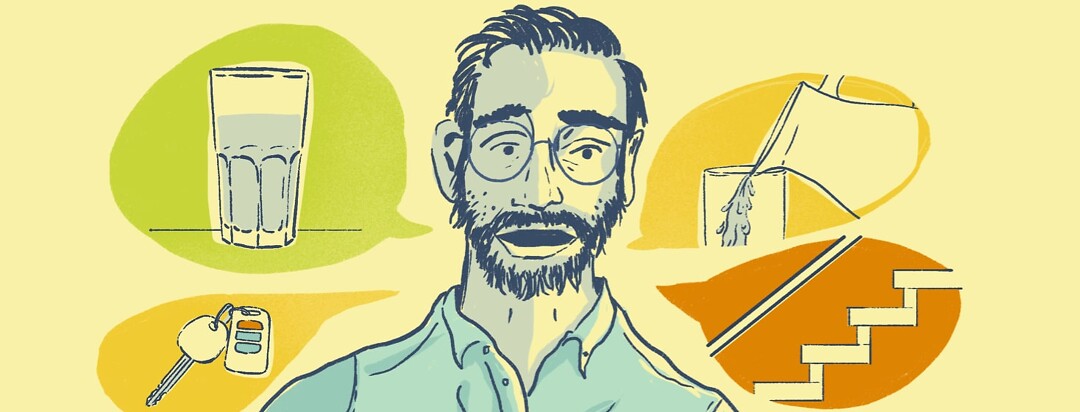My Recent Rapid Decline in Vision
Part of me thinks, “If I’m an advocate for MacularDegeneration.net, I need to stay positive and upbeat and offer encouragement to our members.” And that’s on all the articles I submit for your consideration.
This still resonates with me, but I also need to tell you my truth. So, dear readers, buckle your seatbelts — here we go!
My diagnosis history
I’m a 72-year-old guy that was diagnosed 9 years ago with AMD in both eyes — dry in one, wet in the other. I made an uneasy truce with this disease through the years, as I was quite stable with about 20/30 vision in both eyes for most of this time.
Was I scared? Yes! However, my vision remained stable for such a long time that I became used to my lot in life.
Progressive vision loss
That is... until now! Just in this last crazy year we’ve had, my dry AMD eye went from 20/30 to 20/400! I am now legally blind in one eye! My dry macular degeneration went into what’s called geographic atrophy (GA). This is called monocular vision, and it has many subtle and not-so-subtle effects. More later on this.
Easing my worries
Not to worry! (I try to tell myself daily)... My wet AMD eye still checks out at 20/30 or so, and I can still do most of the things I’ve always done.
The stats
Also — and this is big! — just a tiny percentage of people with dry AMD progress to wet or GA. Ten percent of people with age-related macular degeneration have wet age-related macular degeneration, and geographic atrophy is even rarer than dry turning to wet.1
In 2020, only 5 percent of people in the MacularDegeneration.net community experienced geographic atrophy, according to the Macular Degeneration In America Survey.
You may never experience geographic atrophy
So, just because something is happening to me doesn’t mean this will happen to you! If you had odds this good all the time, you should go to Vegas and get rich quick!
What effects does monocular vision have on a person?
You’ll be using only one eye instead of using both eyes like a pair. Depth perception, gauging where the last step is when descending stairs, pouring liquid into a glass, etc. But, our brains are very adaptable and are able to adjust. Within a short time, our “good eye” takes over, and tasks that were previously difficult become easier.
Practical tips
- When putting a drink down, place the other hand on the table or surface, then place the drink next to it.
- When pouring liquid, gently rest the tip of the container on the rim of the cup or glass.
- It can be difficult to judge the last step on a staircase. Move cautiously and use the banister or handrail. Make sure you’ve found the last step by sliding your foot forward while still holding the handrail.
- Driving? I no longer drive at night. Also, I try to stay in my neck of the woods where I’m familiar with the roads. Most states require 20/40 vision or better in your good eye to renew your license. Exercise extreme caution when it comes to putting you and others at risk. I’ll surrender my keys as soon as my driving becomes an issue.
It is my sincere hope that you will never degrade into monocular vision. But if you do, all is not lost. I can still read (electronic devices), watch TV, drive (in my new limited way), and do most of the things I always could.
Editor's Note: As of August 2023, 2 drugs known as complement inhibitors — Syfovre® and Izervay™ — have been approved by the US Food and Drug Administration (FDA) to treat geographic atrophy (GA).

Join the conversation